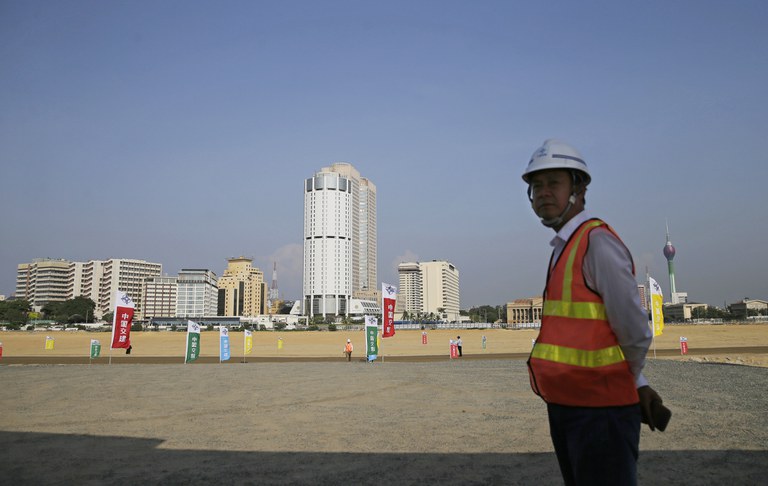China has built a global network of commercial ports overseas that helps Beijing wield economic power as well as expand naval activities, a new report said.
The Council on Foreign Relations (CFR) think tank released an interactive report Monday tracking China’s control of overseas ports, some of which could double up as naval bases.
In 2013, Chinese President Xi Jinping first announced a plan for the 21st Century Maritime Silk Road as part of his ambitious Belt and Road Initiative to boost global connectivity and China’s access to foreign markets as around 95 percent of China’s international trade is being conducted through sea lanes.
Ten years on, Chinese entities have now acquired equity ownership or operational stakes in 101 port projects across the world, 92 of which are active. Beijing has signed 70 bilateral and regional shipping agreements with 66 countries and regions.
“China operates or has ownership in at least one port in every continent except Antarctica,” CFR said.
The network of sea ports that China owns and operates bears an increasingly strategic importance, not least because of its potential dual use.
Among the 92 active projects, 13 have a major Chinese ownership. Ten of them have suitable infrastructure for future military use.
Potential naval use
Some projects with dual-use potential where China owns a majority share are in Myanmar, Sri Lanka, Peru and Brazil.
However, “the growing scrutiny from the West could mean that building naval bases is not an effective way for the Communist Party of China (CPC) and the Chinese government to project power globally,” the CFR report said.
“The real leverage of the CPC and the Chinese government over the West is not necessarily in building newer and bigger naval bases,” the authors said, adding that “China’s leverage is in its varied degrees of investment and ownership in the world’s busiest and most-connected ports, which underpin the global flow of goods.”

China has already invested heavily in some of the most connected countries in the world such as South Korea and Singapore.
“China’s heavy investment in the world’s most-connected ports highlights its strong influence over the supply chains of global trade,” CFR added.
Besides the network of ports, China also owns the largest fleet in the world. The People’s Liberation Army (PLA) Navy currently has 370 ships and submarines, according to a recent report by the Pentagon. To compare, the U.S. Navy has 291 ships.
The U.S. Defense Department also estimated that China’s fleet will grow to 395 ships by 2025 and 435 ships by 2030.
Edited by Elaine Chan and Taejun Kang.

